- About Sado
- History
About Sado
History
Discoveries unearthed from ruins indicate that Sado Island has been inhabited since 10,000 years ago. In a Japanese creation myth found in the oldest history book Kojiki (Record of Ancient Matters), Sado appears as the seventh island of a Japan consisting of many islands. In the same creation myth found in the Nihonshoki (Chronicles of Japan), the Island of Sado is fifth to appear, along with its twin fellow, the Island of Oki.
Sado was already one of the independent provinces that comprised Japan in the Nara Period (late 6th Century to early 7th Century), and was designated an island of exile. Until medieval times, many court nobles and intellectuals who lost in politics were exiled to Sado. Exiles incude Hozumi Asomioyu in 722, a poet who criticised the imperial family, Emperor Juntoku in 1221 who lost the Jokyu Disturbance, a Buddhist monk Nichiren in 1271, who criticised the Kamakura Shogunate and other schools of Buddhism, and Zeami in 1434, a Noh actor and playwright who incurred the shogun's wrath.
As seen in the Tales of Times Now Past written in the late Heian Period (late 12th century), Sado was known as an island that produced gold. Recognising its potential, Ieyasu Tokugawa, a shogun, promoted development of gold and silver mines by placing Sado under the direct control of the Tokugawa Shogunate. Gold and silver produced on Sado underpinned the finances of the shogunate.
-
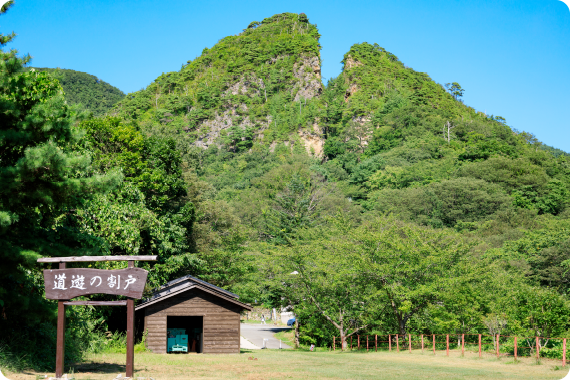
Sado Gold Mine "Doyu no Warido
-
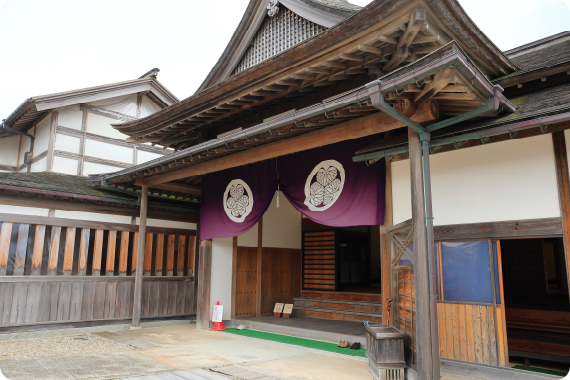
Ruins of Sado Magistrate's Office
The prosperity of the gold mine attracted mining engineers, miners, carpenters, surveying technicians, merchants, fishermen, and so on, and caused a rapid rise in population and a demand for food. By making use of mining technologies, new paddy fields were developed on coast terraces. To secure operation materials required at the mine, such as charcoal and timber, forests in the mountains were managed as public forests under the ultimate control of the Sado Commissioner's Office.
With its well-looked after forests and farmland, Sado was the last natural habitat of the wild Japanese crested ibis (toki) , an internationally protected bird. Although toki could be found anywhere on the island until the end of the Edo Period (1603-1867), it became endangered, due to overhunting and the deteriorating living environment after the Meiji Period (1868-1912). Japanese crested ibises went extinct in 2003, but then artificial insemination with crested ibises presented by the Chinese government started in 1999, and the first baby bird was born in that year. After 2000, baby birds were raised with increasing success, and related officials and people made concerted efforts to provide a more habitable environment for toki. Since ten toki were released back into the wild in 2000, people have been tackling local challenges, with a goal to release an increased number of bred toki into the skies of Sado.
Historic Figures Exiled to Sado
Emperor Juntoku
Emperor Juntoku, who acceded to the throne as the 84th Emperor of his line, was not actively involved in politics during his emperor father's rule. Rather, he is thought to be devoted to studies on usages or practices of the court and noble households, and tanka (Japanese poetry) . He joined a consipiracy planned by Emperor Gotoba to overthrow the Kamakura Shogunate and started the Jokyu Disturbance. However, the disturbance was suppressed by the shogunate army lead by Yoshitoki Hojo, a regent of the Kamakura Shogunate. Emperor Juntoku was then, as an alleged mastermind, forced into exile on Sado in 1221. He was not allowed to go back to the then-capital city of Kyoto. After twenty-two years on Sado, he passed away at the age of forty-six. Many historic sites and legacies, such as Kuroki Palace, his residence, and Mano Mausoleum, where he is buried, still remain in Sado.
-
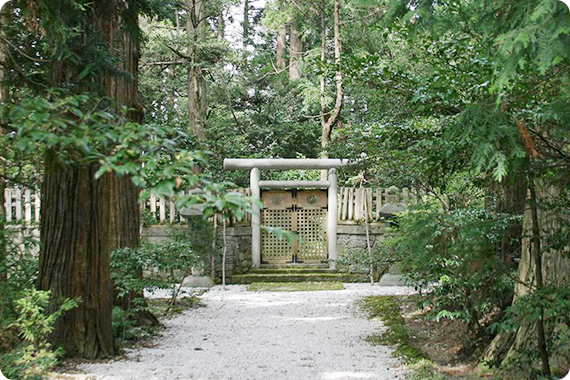
Mano Goryo Mausoleum
-
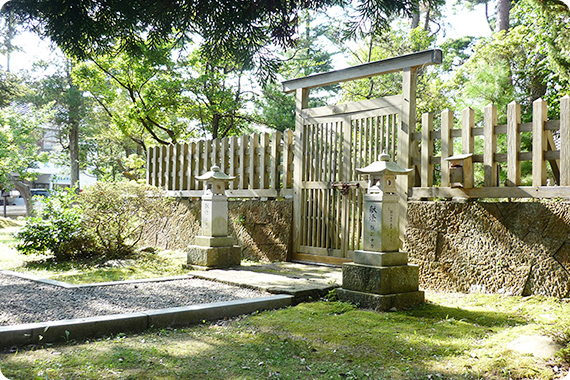
Kuroki Palace
Nichiren Shonin (Buddhist monk)
Nichiren is the founder of the Nichiren school of Japanese Buddhism. After a wave of earthquakes, famines and epidemics, he wrote and submitted a book Rissho Ankokuron (The Establishment of Righteousness and the Pacification of the Country) to Tokiyori Hojo, who reigned supreme at the Kamakura Shogunate. In the book, Nichiren explained that the series of disasters happened because the Shogunate and common people believed in heretic religions, and insisted that more disasters are likely to happen unless everyone believes in hokekyo (the Lotus Sutra). Accused of blaming the Kamakura Shogunate and other Buddhism schools, he was exiled to Sado in 1271. Nichiren Shonin was forced to live in Sanmaido in the Tsukahara area of Sado, in a run-down, small building within the grounds of a graveyard. He lived there for six months until he was transferred to Ichinosawa in the following April. In Tsukahara, he sparked off the Tsukahara debate with other priests from different schools and authored Kaimokusho ("The Opening of the Eyes"). After he moved to Ichinosawa, he wrote Kanjinhonzonsho ("The Object of Devotion for Observing the Mind"), and revealed the Hokke Mandala (Lotus Mandala), the main object of worship in the Nichiren school. Nichiren was pardoned after three years on Sado, and returned to Kamakura. Many sites and legacies connected with Nichiren can be found here and there in Sado.
-
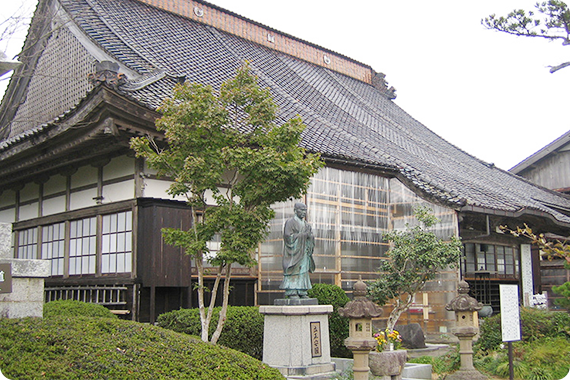
Konponji Temple
-
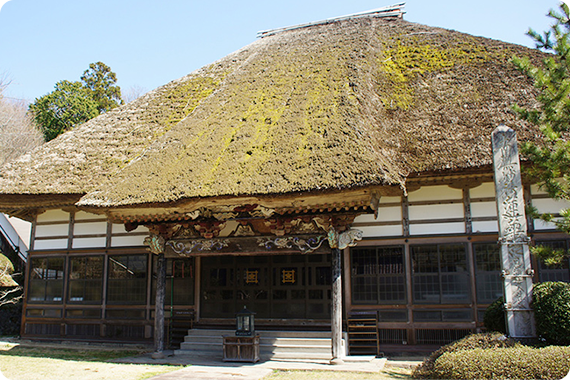
Myoshoji Temple
Zeami
Zeami completed his study of Japanese Noh theatre under the patronage of Yoshimitsu Ashikaga, the third shogun of the Muromachi Shogunate (1392-1573). He incurred the wrath of Yoshimasa Ashikaga, the sixth shogun, and was banished to Sado in 1434. Arriving at Oda in Sado, Zeami was forced to live in Manpukuji Temple, Shinbo, after Chokokuji Temple, and later, transferred to Shohoji Temple in Izumi due to a fight nearby. As can be confirmed by the “Kintosho (Writings of the Golden Isle)" that Zeami produced while in Sado, he was in exile on Sado until 1436. Little is known about the rest of his life, but it is said that he lived at his sister's place after the shogun was assassinated in the Kakitsu Disturbance, and he was pardoned.
-
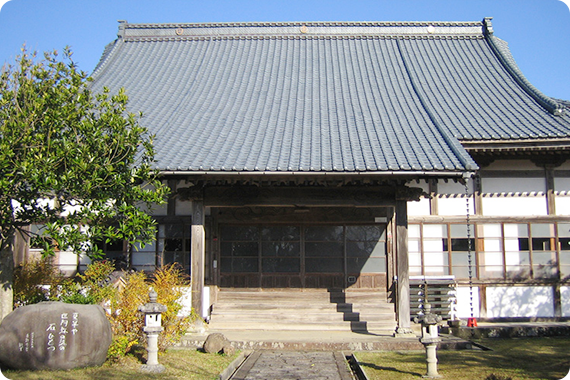
Shoboji Temple
-
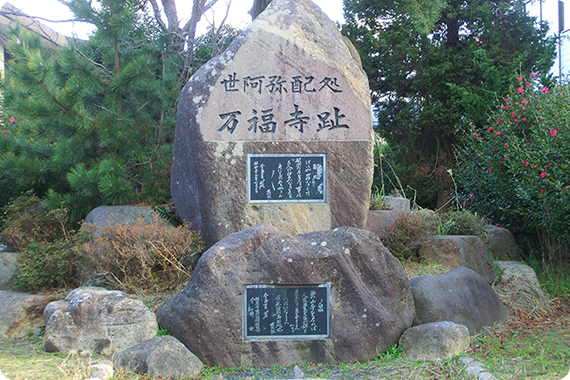
Manpukuji Temple